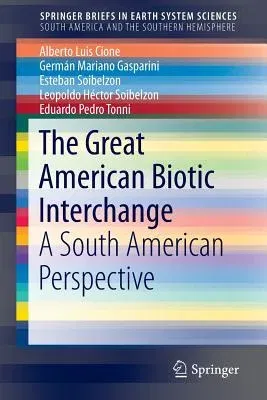South American ecosystems suffered one of the greatest biogeographical
events, after the establishment of the Panamian land bridge, called the
"Great American Biotic Interchange" (GABI). This refers to the exchange,
in several phases, of land mammals between the Americas; this event
started during the late Miocene with the appearance of the Holartic
Procyonidae (Huayquerian Age) in South America and continues today. The
major phases of mammalian dispersal occurred from the Latest Pliocene
(Marplatan Age) to the Late Pleistocene (Lujanian Age). The most
important and richest localities of Late Miocene-Holocene fossil
vertebrates of South America are those of the Pampean region of
Argentina. There are also several Late Miocene and Pliocene localities
in western Argentina and Bolivia. Other important fossils have been
collected in localities of Pleistocene age outside Argentina: Tarija
(Bolivia), karstic caves of Lagoa Santa and the recently explored caves
of Tocantins (Brasil), Talara (Perú), La Carolina (Ecuador), Muaco
(Venezuela), and Cueva del Milodon (Chile), among others. The book
discusses basic information for interpreting the GABI such as taxonomic
composition (incorporating the latest revisions) at classical and new
localities for each stage addressing climate, environments, and time
boundaries for each stage. It includes the chronology and dynamics of
the GABI, the integration of South American mammalian faunas through
time, the Quaternary mammalian extinctions and the composition of recent
mammalian fauna of the continent.

